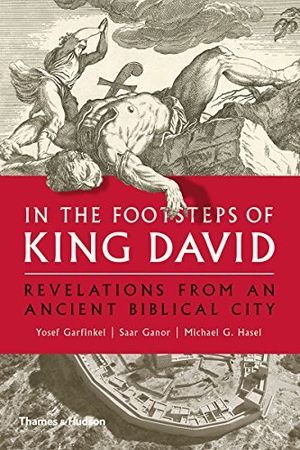Until the publication of In the footsteps of King David, the prevailing approach to biblical archaeology has often been denial of the factuality of biblical texts.
From 2007 to 2013, a team of archaeologists (led by the authors of this fascinating volume) excavated Khirbet Qeiyafa. This is located in the Elah Valley on the border of ancient Judea and Philistia, close to the location of David’s battle with Goliath. They concluded that they had uncovered the biblical city of ‘Shaarim’ (Joshua 15:36; 1 Samuel 17:52; 1 Chronicles 4:31).
Garfinkel, Ganor and Hasel utilised cutting-edge cyber tools, aerial photography and 3D-imaging during the excavation at Khirbet Qeiyafa. Valuable information was unearthed, which, they claim, verifies the biblical accounts of the history, culture, religion and architecture of Judah, from the time of the Judges to the reign of Solomon.
The ground-breaking discoveries include the earliest Hebrew inscription outside of the Bible, pottery from the time of Israel’s early monarchy, and evidence of personal and communal religion as described in the books of Judges and Samuel.
References to ‘Eshbaal’ (‘Ishbosheth’ in the Bible) were also found, a name that occurs frequently in the books of Samuel, not least as the name of the rival king of Israel at the commencement of David’s reign.
Seven mazzabot (standing stones) in the vicinity of the gates of Khirbet Qeiyafa/Shaarim shed light on the meaning of Josiah’s breaking down of ‘the high places of the gates’ (2 Kings 23:8). Discovery of ‘cult-rooms’ attest to the type of personal and communal religion practiced, for example, by Micah in Judges 17.
The model ‘temples’ found in Shaarim enable us to picture elements of the architecture of Solomon’s temple. Eighty line drawings and 26 colour plates reveal something of the riches uncovered at Khirbet Qeiyafa.
Coming as it does from non-Christian scholars and a reputable, secular publishing house, the book provides a welcome and trustworthy assurance that the Hebrews of the early monarchy reliably recorded and preserved historical memories both in the biblical writings and beyond.
Therefore, the claim of modern scholars that we possess no historical information about the period of Judah’s early monarchy proves to be groundless. This is archaeological writing at its best and most accessible.
Mike Moore
Curry Rivel, Somerset




